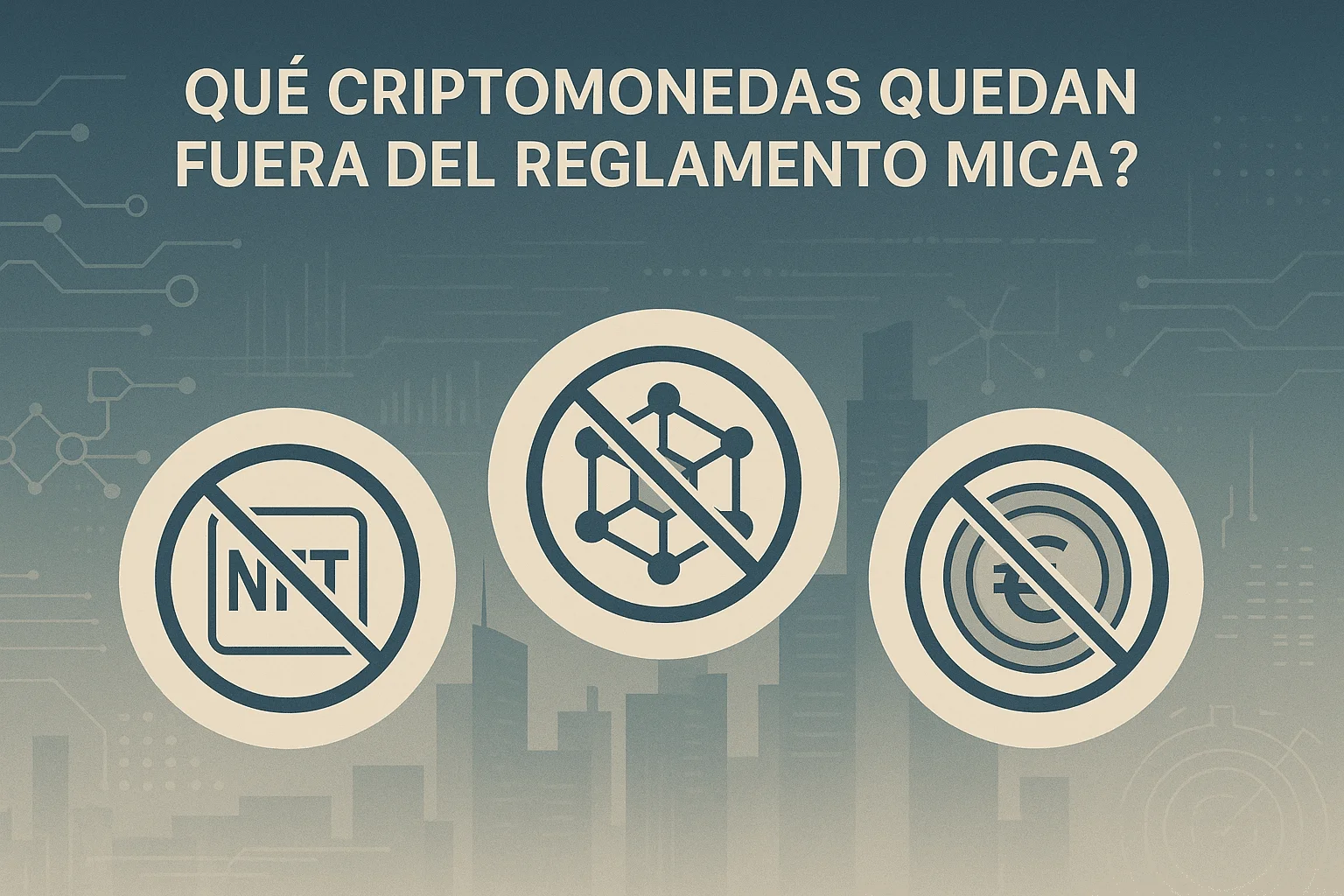How to Launch Your Business Project with Legal Security from Day One
Discover how to launch your business project on a solid legal foundation. We analyze taxes, licenses, contracts, and legal structures to avoid errors and grow safely.
Read more →
The MICA Regulation (Markets in Crypto-Assets) marks a turning point in the European regulation of crypto-assets. It establishes common rules on issuance, trading, supervision, transparency, and consumer protection. However, not all cryptocurrencies or tokens are included within its scope of application.
In this article, we review which crypto-assets and entities are expressly excluded from the MICA Regulation, why, and which legal framework applies to them in Spain instead.
The MICA Regulation has been compared to the GDPR for its impact on a previously fragmented sector. Its entry into force represents progress in legal certainty, but since its approval, its shortcomings have already been noted.
Many experts within the European Parliament itself acknowledge that MICA will require a second version (MICA 2) due to the significant exclusions it carries, particularly in high-adoption areas such as NFTs or DeFi.
The Regulation itself expressly establishes which types of assets and actors are outside its scope. Below are the most relevant ones summarized:
Excluded:
- Security tokens (considered financial instruments)
- Deposits and structured deposits
- Investment funds
- Securitizations
- Insurance and reinsurance products
- Pension plans and social security schemes
🧭 Applicable regulation in Spain:
- Regulation 2022/858 (DLT Pilot Regime for Market Infrastructures)
- MiFID II
- New Securities Market Law
---
Although widely used in digital art, video games, or representation of real-world assets, NFTs fall outside the direct scope of MICA unless they are, in substance:
- Fractionalized
- Substantially identical (even if they have a unique identifier)
- Represent fungible assets or rights
🧭 In that case, they may indeed fall under MICA.
👁 Attention: MICA makes it clear that substance prevails over form. The mere fact that a token has a unique hash is not enough to exclude it if its characteristics are homogeneous or mass-marketable.
🧭 Applicable regulation:
It depends on the NFT’s use. For example:
- If it represents a work of art → intellectual property law + Civil Code
- If it represents an insurance policy or property → relevant sector-specific regulation
---
MICA also does not apply to:
- The European Central Bank
- National central banks
- Public bodies such as the European Investment Bank or the EFSF
- Companies providing crypto-asset services only to their subsidiaries or parent companies
- Liquidators, insolvency administrators, or monetary authorities
---
Any digital asset issued by a European or foreign central bank in the exercise of its monetary functions is excluded. This includes, for example, a future digital euro.
Therefore, MICA does not affect the design, issuance, or use of CBDCs, although specific rules on this are expected to be developed in the coming years.
---
MICA does not regulate fully decentralized protocols — that is, those where there is no legal entity that can be held responsible for providing the service.
This leaves out:
- Fully autonomous DAOs
- Lending or liquidity pool protocols not managed by intermediaries
- Platforms without custodians or identifiable control points
🔍 But be careful: if there is a legal entity providing part of the service, MICA will apply to that scope.
🧭 In Spain, DAOs have no clear legal status, but they could be treated as civil partnerships or co-ownerships, with the corresponding legal consequences and liabilities.
---
Mining — particularly proof-of-work mining — is not directly regulated by MICA, except in:
- Cases involving modification of the whitepaper
- Specific exceptions on governance
- Or situations involving centralized service provision
As long as it remains in DeFi or self-custody environments, mining is not subject to the regulation.
---
Although certain crypto-assets fall outside MICA, this does not mean they are unregulated. Other frameworks may apply, such as:
- Law 10/2010 on the prevention of money laundering and terrorist financing
- EU AML Directives
- National tax regulations, with particular attention to binding rulings by the Spanish Tax Agency (AEAT)
- Sector-specific regulations (insurance, intellectual property, financial markets...) depending on the type of asset represented by the token
---
MICA establishes a common foundation for crypto-asset markets but does not cover the entire ecosystem. Some assets, such as NFTs, DeFi, or CBDCs, are expressly excluded.
This does not imply a legal vacuum but rather a fragmented framework that requires case-by-case analysis to determine which national or EU laws apply.
Furthermore, the European Commission will have 18 months after MICA’s entry into force to assess its impact and propose adjustments. It is likely that many of the elements excluded from this first version will eventually be included in the future.
For sector participants, understanding what falls outside MICA — and what replaces it — is essential to operate legally in Spain.